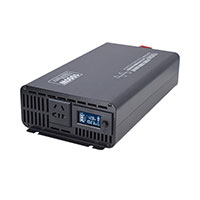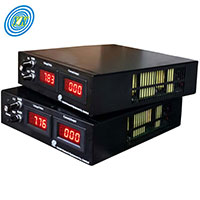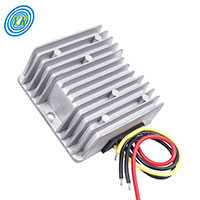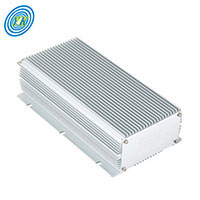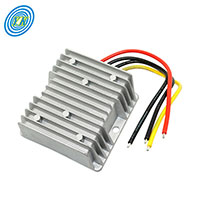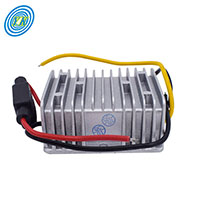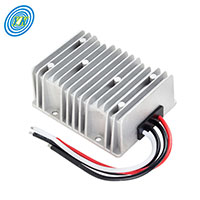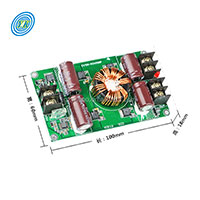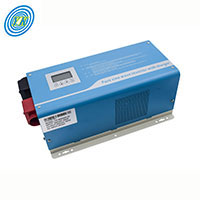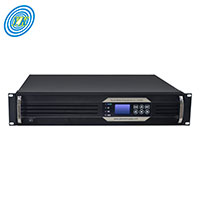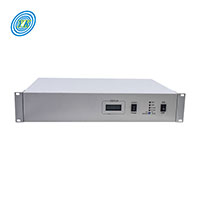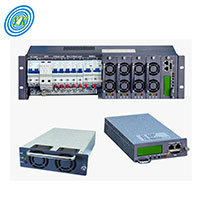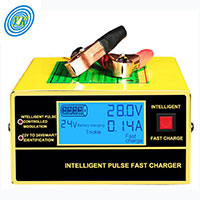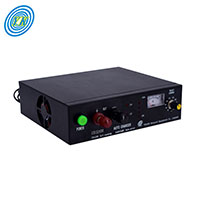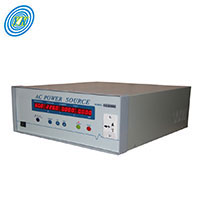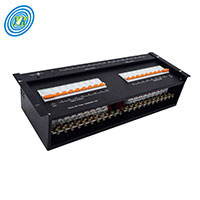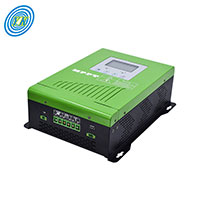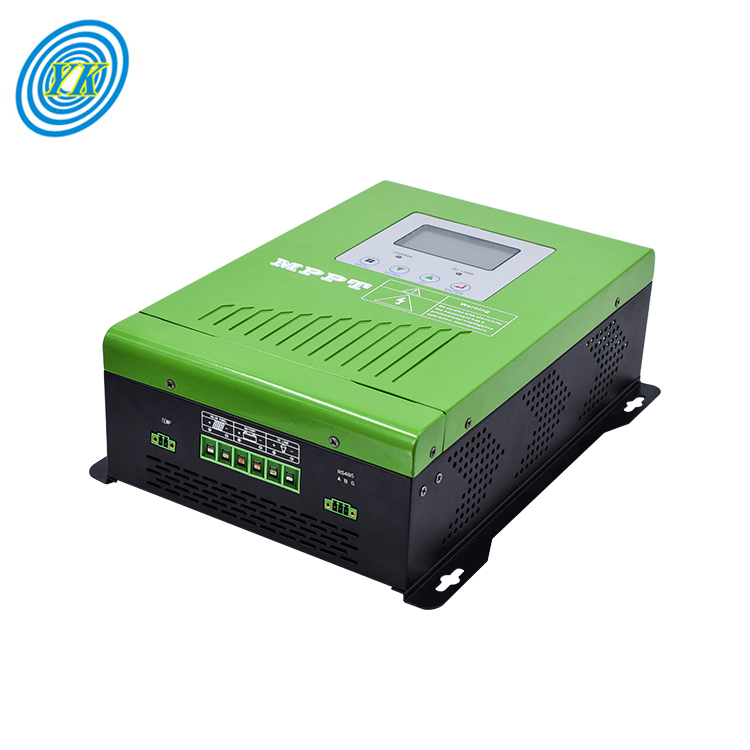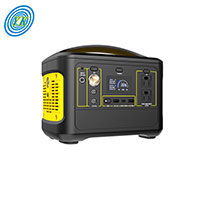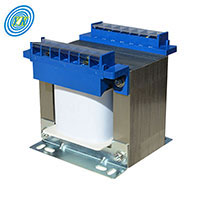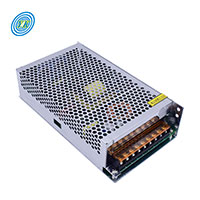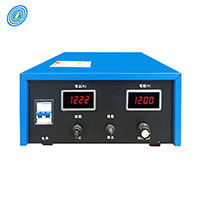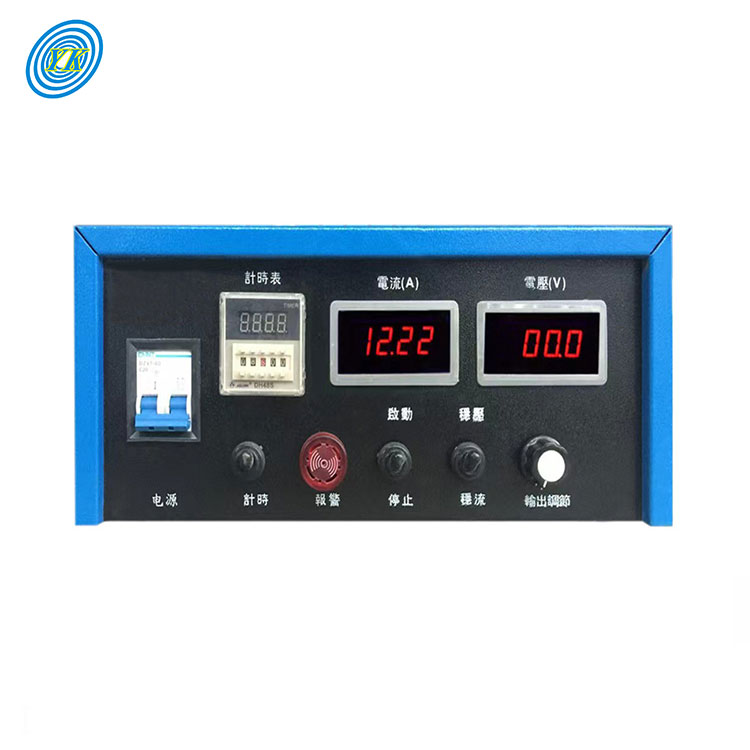
The Impact of Power Supply on Electroplating: A Case Study of YUCOO’s Electroplating Power Supplies
Click: 1421 Date: 11/03/2023 11::23::04 AM
The Impact of Power Supply on Electroplating: A Case Study of YUCOO's Electroplating Power SuppliesElectroplating is an electrolytic process, and it's no secret that the performance, type, and characteristics of the power supply can significantly impact the electroplating process. With the rapid development of modern electroplating technology, the significance of electroplating power supplies has become even more prominent.YUCOO is a company that has made significant strides in the field of electroplating power supplies. Their products are designed with the needs of the electroplating industry in mind, and they have made considerable contributions to the field.YUCOO's Rectifier Power SuppliesOne of the primary types of power supplies used in electroplating is the rectifier power supply. These power supplies convert alternating current (AC) to direct current (DC), which is used in the electroplating process. YUCOO offers a range of rectifier power supplies that are designed to provide stable and efficient power for electroplating processes.Traditional silicon rectifiers have a long history and mature technology. They are currently the mainstream product in the rectifier industry. The power supplies provided by YUCOO are designed to offer low ripple output, making them ideal for electroplating applications where a smooth DC output is required.YUCOO's Switching Power SuppliesAnother innovative product offered by YUCOO is the high-frequency switching power supply. This type of power supply combines the smooth waveform of the silicon rectifier and the convenience of adjustment provided by the silicon controlled rectifier. With a high current efficiency (upwards of 90%) and a small footprint, this type of power supply is promising for future electroplating applications.YUCOO's Pulse Power SuppliesWith the advances in power electronics technology, electroplating rectifiers are evolving from single-function to multi-function. YUCOO's pulse power supplies are controlled by embedded single-chip computers and offer multiple control functions. They provide high-precision automatic adjustment functions and are capable of nearly unchanged output voltage even when the grid voltage fluctuates by hundreds of volts.ConclusionThe choice of power supply is crucial in the electroplating process. With their range of high-quality and efficient power supplies, YUCOO is a reliable choice for businesses in the electroplating industry. Their products are designed to provide stable and efficient power, ultimately improving the quality of the electroplating process.
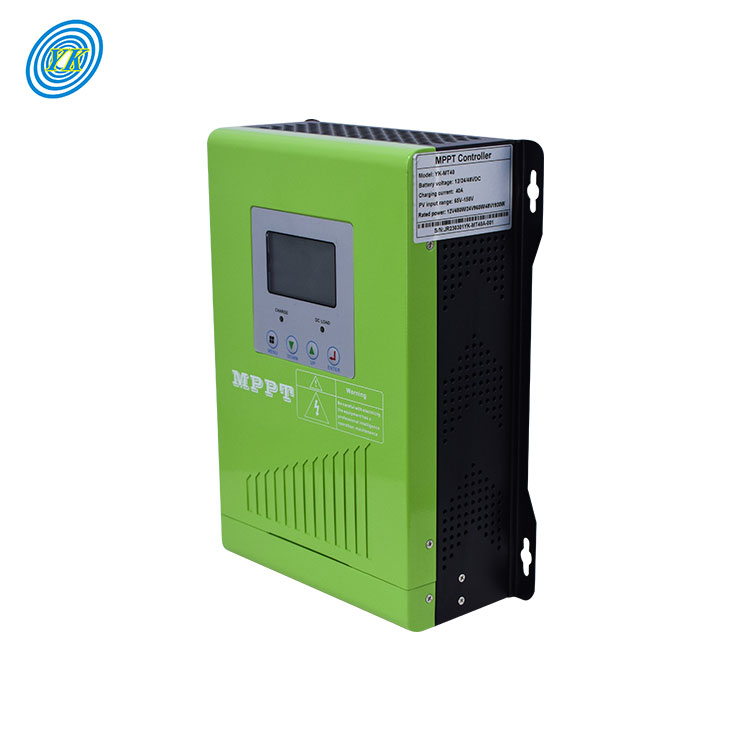
Unleashing the Potential of Renewable Energy: The Crucial Role of MPPT Controllers in Power Systems
Click: 968 Date: 09/21/2023 5::37::46 PM
Unleashing the Potential of Renewable Energy: The Crucial Role of MPPT Controllers in Power SystemsThe increasing demand for energy worldwide has led to a significant interest in renewable energy sources, particularly solar energy, due to its universal availability, environmentally friendly nature, and lower operational and maintenance costs. However, solar panels possess nonlinear electrical characteristics, with a unique maximum power point (MPP), under uniform solar irradiance and temperature. To efficiently extract and deliver maximum power from photovoltaic (PV) systems, Maximum Power Point Tracking (MPPT) control strategies are employed.MPPT Control StrategiesMPPT strategies have been developed to optimize the operation of the PV system, including offline, online, and hybrid techniques. Offline strategies require some PV values to generate the control signal essential for operating the system at its MPP. Online techniques, on the other hand, use PV current and voltage in real-time to achieve the MPP. Hybrid MPPT control strategies combine both online and offline control strategies, using two loops to track the MPP.Despite their potential, traditional MPPT control strategies often fail under varying meteorological conditions and are incapable of operating under partial shading conditions. This issue can lead to significant energy loss and degradation of the overall system performance and efficiency.Robust Integral Backstepping MPPT ControllerTo address these challenges, a robust integral backstepping (RIB) based MPPT control strategy has been proposed. This control strategy consists of two loops, where the first loop generates the real-time offline reference peak power voltage through an adaptive neuro-fuzzy inference system (ANFIS) network. The second loop uses the estimated reference peak power voltage as a set-point value for generating a control signal, thus forcing the PV system to operate at this set-point by continuously adjusting the duty ratio of the power converter.The RIB based MPPT control strategy has shown promising results, outperforming traditional backstepping and integral backstepping techniques in terms of lesser rising time, faster convergence, and minimum output tracking error. Moreover, this technique has demonstrated robustness against plant parametric uncertainties, plant voltage and current faults, and dynamic load, providing a more reliable and efficient solution for harnessing solar power.ConclusionThe introduction of robust and efficient MPPT control strategies, such as the RIB based MPPT controller, plays a crucial role in unleashing the full potential of renewable energy sources. By overcoming the limitations of traditional MPPT strategies, these advanced control techniques can significantly enhance the efficiency and reliability of PV systems, paving the way for a more sustainable and green future.
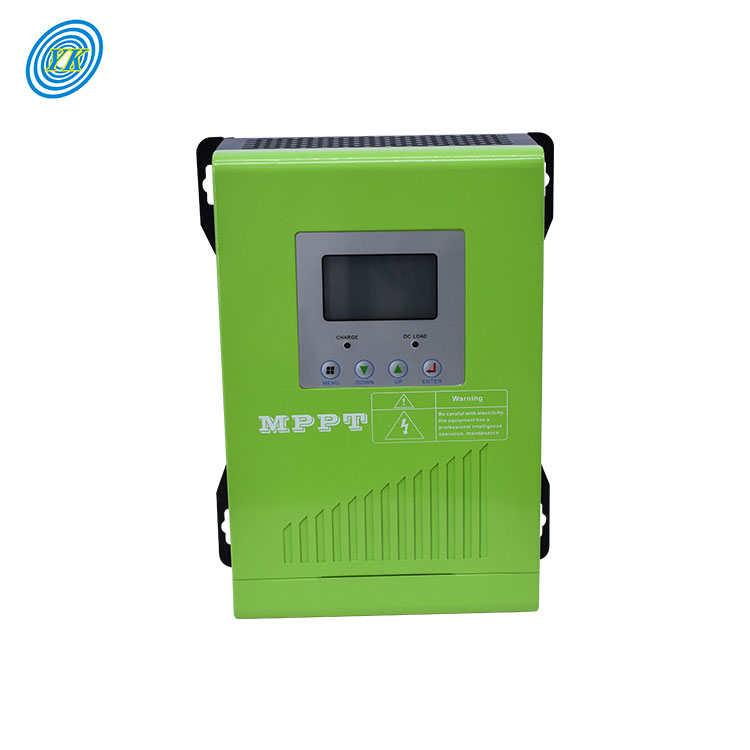
MPPT Controllers: Bridging the Gap Between Energy Generation and Consumption
Click: 857 Date: 09/21/2023 5::16::33 PM
MPPT Controllers: Bridging the Gap Between Energy Generation and ConsumptionIn the realm of renewable energy, one device has proven crucial in optimizing power efficiency and utilization – the Maximum Power Point Tracking (MPPT) controller. As the most efficient type of charge controller used in photovoltaic generation systems, MPPT controllers significantly increase the energy harvested from solar panels.The role of MPPT controllers is to regulate the energy generated by solar panels, ensuring that the power output is maximized under different weather conditions. However, commercially available MPPT controllers have their limitations. Specifically, they are bound by the input voltage of the solar panel and the charging voltage of the battery, making them less efficient under very low irradiance weather conditions such as cloudy, sunrise, and sunset times.To bridge this gap, researchers have proposed a method to increase the efficiency of MPPT controllers using a Power Management System that includes a boost converter and a switching circuit. This system operates effectively even under low irradiance conditions. The boost converter, controlled by the Pulse Width Modulation (PWM) function of an Arduino Uno, regulates the voltage required by the MPPT controller. Meanwhile, the switching circuit automatically changes the direction of the current based on the output of the voltage sensors attached to the PV panel and the input of the MPPT controller.The implementation of this Power Management System has shown promising results, with an 8.77% increase in average power to the system compared to the MPPT controller alone. This improvement underlines the potential of MPPT controllers in bridging the gap between energy generation and consumption, further enhancing the efficiency of renewable energy systems.In conclusion, MPPT controllers play a vital role in making renewable energy more feasible and efficient. By continuously pushing the boundaries and seeking ways to improve these crucial devices, we can further accelerate the transition to a more sustainable and energy-efficient future.
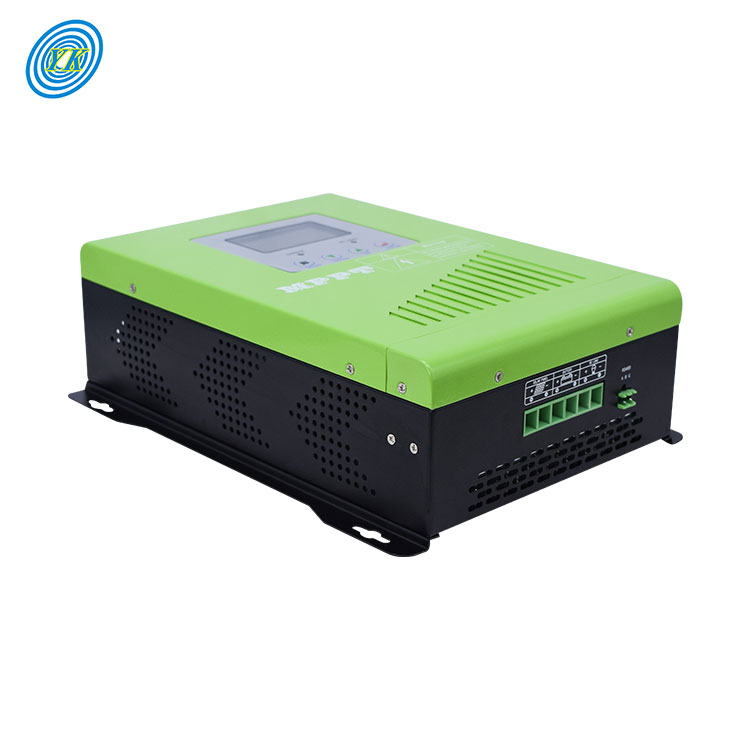
Revolutionizing Power Control: The Role of MPPT Controllers in Electric Vehicles
Click: 816 Date: 09/20/2023 4::35::21 PM
Revolutionizing Power Control: The Role of MPPT Controllers in Electric VehiclesElectric vehicles (EVs) are at the forefront of the green energy revolution. They represent a shift away from fossil fuel-dependent transportation, promising a future of cleaner, more sustainable mobility. A critical component in these electric vehicles is the power control system, specifically the Maximum Power Point Tracking (MPPT) controllers.MPPT Controllers in Power Control SystemsMPPT controllers play a crucial role in managing the power supply in electric vehicles. They regulate the voltage and current from the photovoltaic (PV) panels to achieve maximum power output. The controller continuously adjusts the electric load's resistance to ensure the PV system operates at its most efficient point under varying conditions. This optimization process is crucial in electric vehicles, where power efficiency directly impacts vehicle performance and range.Design of MPPT ControllersThe design of an MPPT controller involves creating a system capable of tracking the maximum power point (MPP) of the PV module, which varies with environmental conditions. This tracking is usually done using algorithms like the Perturb and Observe or the Incremental Conductance method. These algorithms adjust the voltage to find the MPP, ensuring the PV system delivers the maximum possible power.For example, in the Incremental Conductance method, two voltage sensors and two current sensors are needed to sense both the output voltage and current of the PV array. The MPP is achieved when the slope of the Power-Voltage curve has a value of zero. This method is commonly implemented in MATLAB/Simulink.Role of MPPT Controllers in EVsIn electric vehicles, MPPT controllers can enhance the efficiency of the on-board solar charging system. Considering the intermittent nature of solar energy, with factors like shading, temperature, and irradiation affecting power output, it becomes crucial to extract the maximum possible power at any given time. The MPPT controller ensures that the solar charging system operates at its peak efficiency, providing a reliable power source for the EV's battery.Future DevelopmentsThe use of MPPT controllers in EVs opens up possibilities for further advancements. For instance, hybrid controllers combining the strengths of various MPPT techniques could offer better tracking performance and efficiency. Additionally, the integration of artificial intelligence and machine learning could lead to more adaptive and robust MPPT systems capable of predicting and responding to changes in environmental conditions.In conclusion, MPPT controllers are revolutionizing power control in electric vehicles. They ensure that the on-board solar charging systems operate at their maximum potential, enhancing the overall efficiency and performance of the vehicles. As the EV industry continues to grow, the role of MPPT controllers will only become more significant, driving advancements in power control technologies and contributing to a more sustainable future.
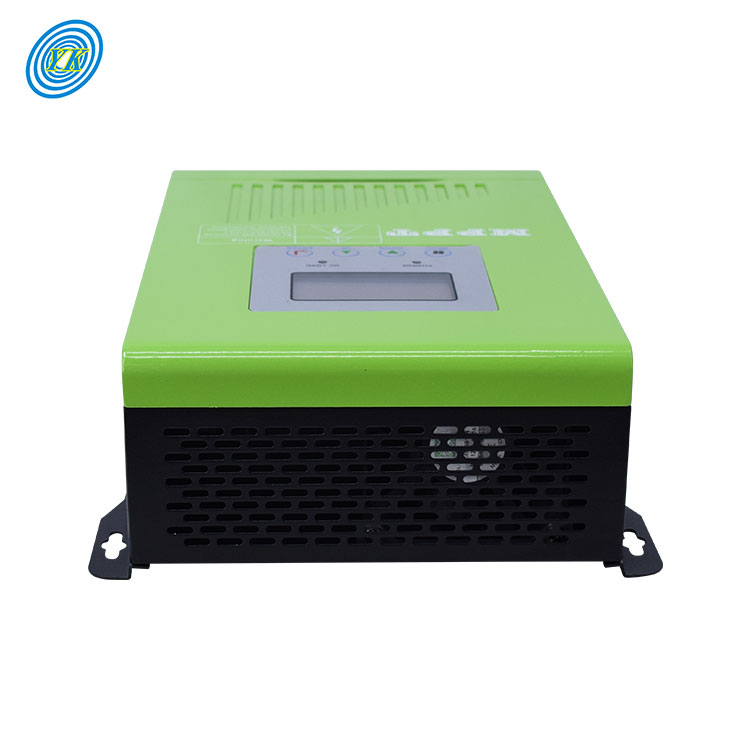
The Future of Energy: Exploring the Potential of MPPT Controllers in Smart Grids
Click: 693 Date: 09/20/2023 4::05::55 PM
The Future of Energy: Exploring the Potential of MPPT Controllers in Smart GridsAs our world becomes increasingly digitized and interconnected, the demand for more efficient and reliable energy systems is growing. At the heart of this evolution is the development of smart grids, a modern form of electricity network that uses digital technology to improve efficiency, reliability, and sustainability of the production and distribution of electricity. One of the key technologies enabling the advancement of smart grids is the Maximum Power Point Tracking (MPPT) controller.What is an MPPT Controller?Before delving into the role of MPPT controllers in smart grids, let's first understand what they are. MPPT controllers are electronic devices that optimize the match between the solar panels (or wind turbines) and the battery bank or utility grid. To put it simply, they ensure that your solar panels or wind turbines generate the most power possible at any given time.The Role of MPPT Controllers in Smart GridsIn the context of smart grids, MPPT controllers play a critical role in managing the flow of electricity from renewable energy sources, such as solar panels and wind turbines. They do this by constantly tracking the maximum power point of these sources and adjusting the power output accordingly. This ensures that the maximum amount of power is extracted from the renewable sources at any given time, thereby improving the overall efficiency of the smart grid.The Impact on Energy Efficiency and SustainabilityBy optimizing the power output from renewable energy sources, MPPT controllers can significantly improve the energy efficiency of smart grids. This is particularly important in today's world, where there is a growing demand for more efficient and sustainable energy solutions. By improving energy efficiency, MPPT controllers can help reduce our reliance on fossil fuels, thereby contributing to the fight against climate change.The Future of MPPT Controllers in Smart GridsLooking ahead, the role of MPPT controllers in smart grids is likely to become even more significant. As more and more households and businesses adopt renewable energy solutions, the demand for efficient and reliable energy management systems will continue to grow. MPPT controllers, with their ability to maximize the power output from renewable sources, will be at the forefront of this transition towards a more sustainable and efficient energy future.In conclusion, MPPT controllers represent a crucial technology in the development and advancement of smart grids. By optimizing the power output from renewable energy sources, they can help improve the efficiency and sustainability of our energy systems, paving the way for a more sustainable and efficient energy future.
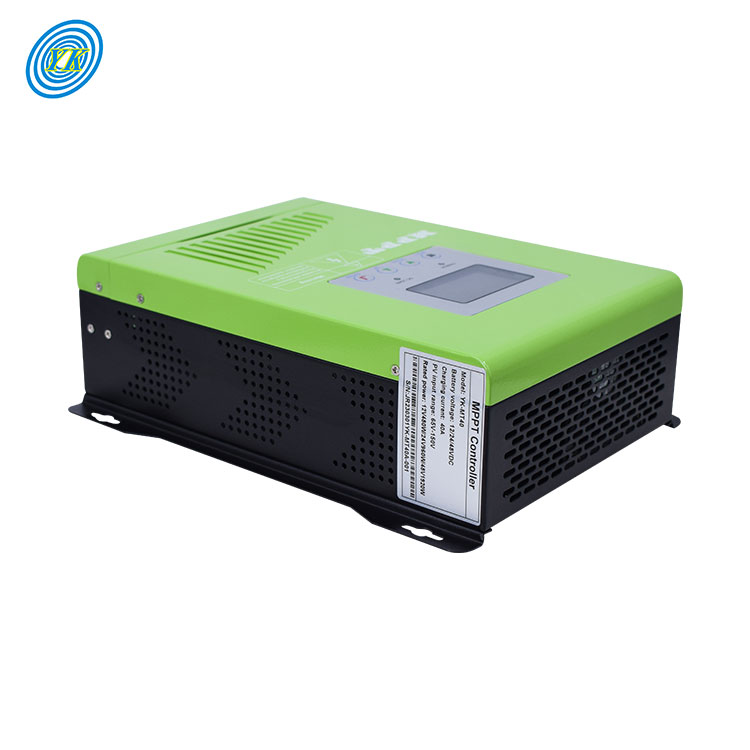
Optimizing Power Efficiency: A Deep Dive into the Role of MPPT Controllers in Wind Energy Systems
Click: 665 Date: 09/20/2023 3::45::02 PM
Optimizing Power Efficiency: A Deep Dive into the Role of MPPT Controllers in Wind Energy SystemsThe demand for renewable energy is increasing as the world seeks to reduce its dependence on fossil fuels. Wind energy is one of the most promising sources of renewable energy due to its ubiquity and potential for high power generation. However, the efficiency of wind energy systems is often limited by the inability to extract the maximum power from the wind at all times. This is where Maximum Power Point Tracking (MPPT) controllers come into play.MPPT controllers are electronic devices that optimize the power output of wind turbines. They do this by continuously adjusting the operational parameters of the wind turbine system to ensure that it operates at its maximum power point (MPP) as much as possible. The MPP is the point at which the power generated by the wind turbine is at its highest, and it varies depending on the wind speed and the characteristics of the turbine.One of the main challenges in implementing MPPT control in wind energy systems is the highly variable nature of wind speeds. Unlike solar power, where the intensity of sunlight can be relatively constant over short periods, wind speeds can change rapidly, making it difficult to maintain the operation of the turbine at the MPP. MPPT controllers address this challenge by using algorithms that can quickly respond to changes in wind speed and adjust the operation of the turbine accordingly.There are several types of MPPT algorithms used in wind energy systems, including Perturb and Observe (P&O), Incremental Conductance (IncCond), and Hill Climbing. These algorithms work by continuously adjusting the operational parameters of the wind turbine and observing the effect on power output. If the power output increases, the adjustment is continued in the same direction; if it decreases, the adjustment is reversed. This process is repeated until the maximum power output is achieved.MPPT controllers play a crucial role in enhancing the efficiency of wind energy systems. By continuously optimizing the operation of the wind turbine to achieve maximum power output, MPPT controllers can significantly increase the amount of power generated by the wind energy system, thereby reducing the cost per unit of energy produced. This makes wind energy a more economically viable source of renewable energy.In conclusion, MPPT controllers are an essential component of wind energy systems. Their ability to optimize power output in response to varying wind speeds makes them indispensable in the quest for more efficient and cost-effective wind energy solutions. As the demand for renewable energy continues to grow, the role of MPPT controllers in wind energy systems is set to become even more important.
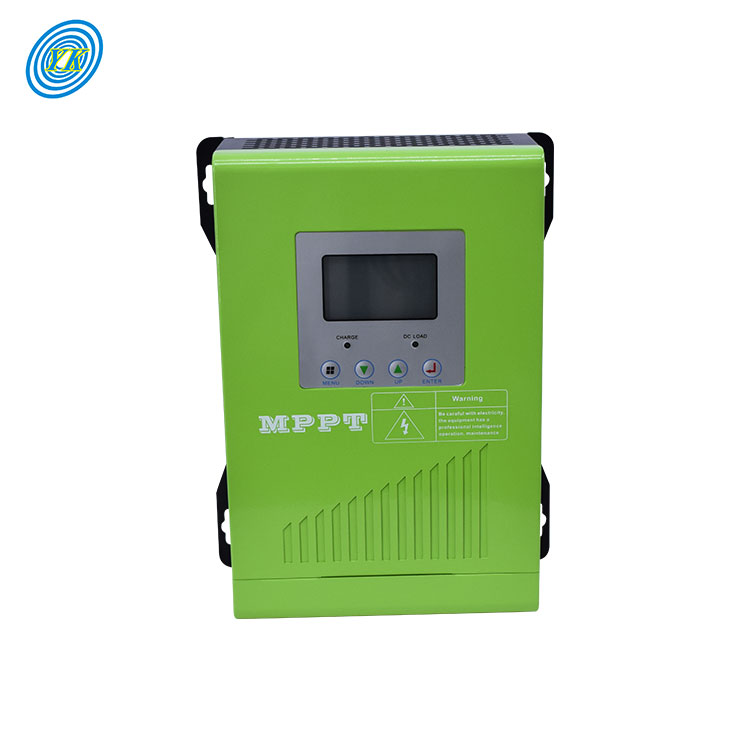
MPPT Controllers: The Unsung Heroes in Modern Energy Management
Click: 624 Date: 09/20/2023 2::23::09 PM
MPPT Controllers: The Unsung Heroes in Modern Energy ManagementIntroduction: In the quest for sustainable energy solutions, maximizing the efficiency of power generation from renewable sources has become paramount. One vital technology that plays a crucial role in optimizing energy production is the Maximum Power Point Tracking (MPPT) controller. While often overshadowed by more prominent renewable energy technologies, MPPT controllers are the unsung heroes behind modern energy management. This article explores the significance of MPPT controllers and their impact on enhancing the efficiency and viability of renewable energy systems.Understanding MPPT Controllers: MPPT controllers are electronic devices or algorithms that enable solar panels, wind turbines, or other renewable energy sources to operate at their maximum power point. They continuously track and adjust the electrical load to ensure optimal power transfer from the energy source to the load. By dynamically adjusting the operating voltage and current, MPPT controllers maximize the energy yield, even under varying environmental conditions such as shading, temperature changes, or system aging.Enhancing Solar Energy Systems: Solar energy is one of the most abundant and widely accessible renewable energy sources. MPPT controllers play a pivotal role in solar energy systems by efficiently harnessing sunlight and converting it into usable electricity. By maintaining the solar panel's output voltage at the maximum power point, MPPT controllers ensure that the system operates at peak efficiency, leading to increased energy production. This capability is particularly crucial in grid-tied solar systems, off-grid applications, and solar-powered charging stations.Optimizing Wind Energy Systems: Wind energy is another significant contributor to the renewable energy mix. MPPT controllers are instrumental in extracting the maximum power from wind turbines. As wind speeds fluctuate, MPPT controllers adjust the turbine's rotational speed and blade pitch angle to maintain optimal power generation. This dynamic control mechanism allows wind turbines to operate efficiently across a wide range of wind speeds, resulting in improved energy capture and increased overall system performance.Enabling Efficient Power Management: MPPT controllers not only enhance energy generation but also facilitate efficient power management in renewable energy systems. They act as an interface between the energy source and the load, ensuring that the generated power is utilized optimally. MPPT controllers can incorporate advanced features such as battery charging algorithms, load prioritization, and grid synchronization, enabling seamless integration with energy storage systems, smart grids, and electric vehicle charging infrastructure.Advancements and Future Prospects: The field of MPPT controllers continues to evolve, driven by advancements in power electronics, control algorithms, and system integration. Researchers and engineers are exploring novel techniques such as artificial intelligence, machine learning, and adaptive control to further improve the efficiency and performance of MPPT controllers. Furthermore, the integration of MPPT controllers with energy management systems and the emergence of microgrids hold immense potential for revolutionizing energy management practices.Conclusion: MPPT controllers are the unsung heroes in modern energy management, playing a vital role in optimizing renewable energy systems' efficiency and viability. Their ability to extract the maximum power from solar panels and wind turbines, along with facilitating efficient power management, makes them indispensable in the transition towards a sustainable energy future. As renewable energy continues to gain momentum, it is essential to recognize and appreciate the significant contribution of MPPT controllers in shaping our energy landscape.
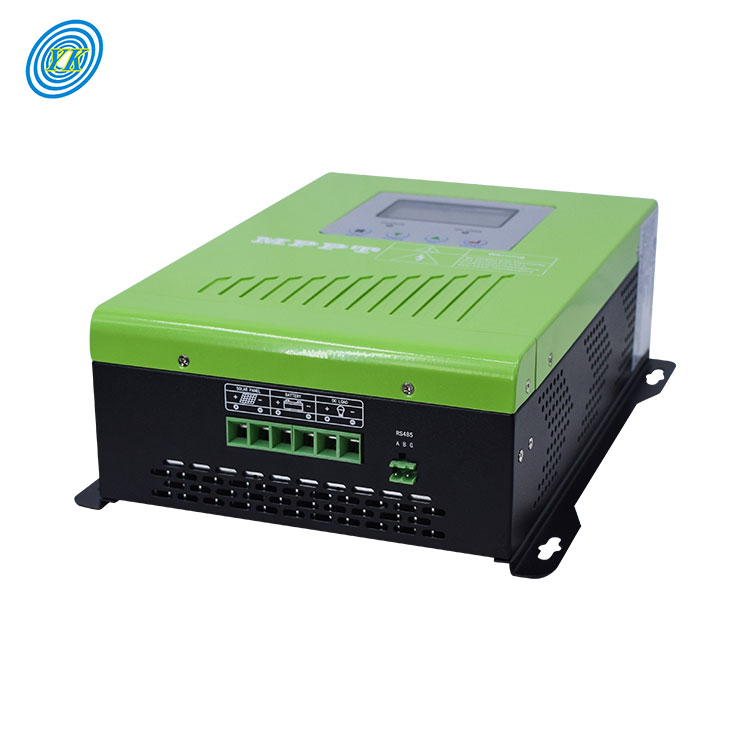
The Power Behind the Scene: How MPPT Controllers Impact Renewable Energy Efficiency
Click: 663 Date: 09/20/2023 2::13::45 PM
The Power Behind the Scene: How MPPT Controllers Impact Renewable Energy EfficiencyIntroductionRenewable energy sources, such as solar power, play a crucial role in addressing the global energy crisis and reducing carbon emissions. However, the efficiency of renewable energy systems heavily relies on the ability to extract the maximum power from the available resources. This is where Maximum Power Point Tracking (MPPT) controllers come into play. MPPT controllers optimize the power output of renewable energy systems by dynamically adjusting the operating point of the energy source, such as a solar panel, to the maximum power point (MPP).Maximizing Power Output with MPPT TechniquesMPPT controllers employ various techniques to optimize power output in different conditions. These techniques can be broadly classified into three types: conventional, artificial intelligence (AI)-based, and hybrid techniques. Some commonly used MPPT techniques include:Constant Voltage Control (CVC): This technique maintains a constant voltage across the solar panel and adjusts the current flowing through it to maximize power output.Hill-Climbing: The Hill-Climbing algorithm continuously perturbs the operating point of the solar panel and compares the resulting power output to determine the direction of maximum power.Perturb & Observe (P&O): P&O is a widely used MPPT algorithm that periodically perturbs the operating point of the solar panel and observes the change in power output to track the MPP.Sliding Mode Control (SMC): SMC-based MPPT techniques use a sliding mode control strategy to track the MPP by continuously adjusting the operating point of the solar panel.Incremental Conductance (IC): IC algorithms utilize the incremental conductance of the solar panel to dynamically adjust the operating point and track the MPP.Artificial Intelligence (AI)-based Techniques: These techniques, such as fuzzy logic controllers, artificial neural networks, and particle swarm optimization, leverage AI algorithms to optimize power output based on real-time data and environmental conditions.Hybrid Techniques: Hybrid MPPT techniques combine conventional and AI-based techniques to handle dynamic and partial-shading conditions more effectively.Impact on Renewable Energy EfficiencyMPPT controllers significantly impact the efficiency of renewable energy systems, particularly solar power systems. By continuously tracking the MPP of solar panels, MPPT controllers ensure that the maximum available power is extracted from the panels, even in varying environmental conditions.Increased Energy Harvesting: MPPT controllers optimize the power output of solar panels by adjusting the operating point to the MPP, resulting in increased energy harvesting efficiency. This allows solar power systems to generate more electricity from the same amount of sunlight.Improvement in Partial Shading Conditions: Partial shading can significantly reduce the efficiency of solar panels, as shaded cells operate at different voltage levels. MPPT controllers mitigate this issue by dynamically adjusting the operating point of each cell to maximize the overall power output, minimizing the impact of shading on the system's efficiency.Enhanced System Performance: By ensuring that solar panels operate at their maximum power point, MPPT controllers optimize the overall performance of renewable energy systems. This leads to higher energy production, improved system reliability, and increased return on investment.Future Trends and Potential ApplicationsAs renewable energy continues to gain traction worldwide, the role of MPPT controllers in enhancing energy efficiency is becoming increasingly important. Here are some potential future trends and applications of MPPT controllers:Integration with Smart Grids: MPPT controllers can play a vital role in integrating renewable energy systems, such as solar panels, with smart grids. By optimizing power output and ensuring seamless integration, MPPT controllers can contribute to the stability and reliability of smart grid networks.Electric Vehicles (EVs): MPPT controllers can be utilized in EV charging stations to maximize the efficiency of solar-powered charging infrastructure. By extracting the maximum power from solar panels, MPPT controllers can help reduce the environmental impact of transportation and promote sustainable mobility.Off-Grid Applications: MPPT controllers are essential for off-grid renewable energy systems, such as standalone solar power systems in remote areas. By optimizing power output, MPPT controllers enable reliable and efficient operation of off-grid systems, reducing the reliance on fossil fuels.In conclusion, MPPT controllers are crucial components in maximizing the efficiency of renewable energy systems, particularly solar power systems. By continuously tracking the MPP of energy sources and optimizing power output, MPPT controllers contribute to increased energy harvesting, improved system performance, and enhanced integration with various applications.
